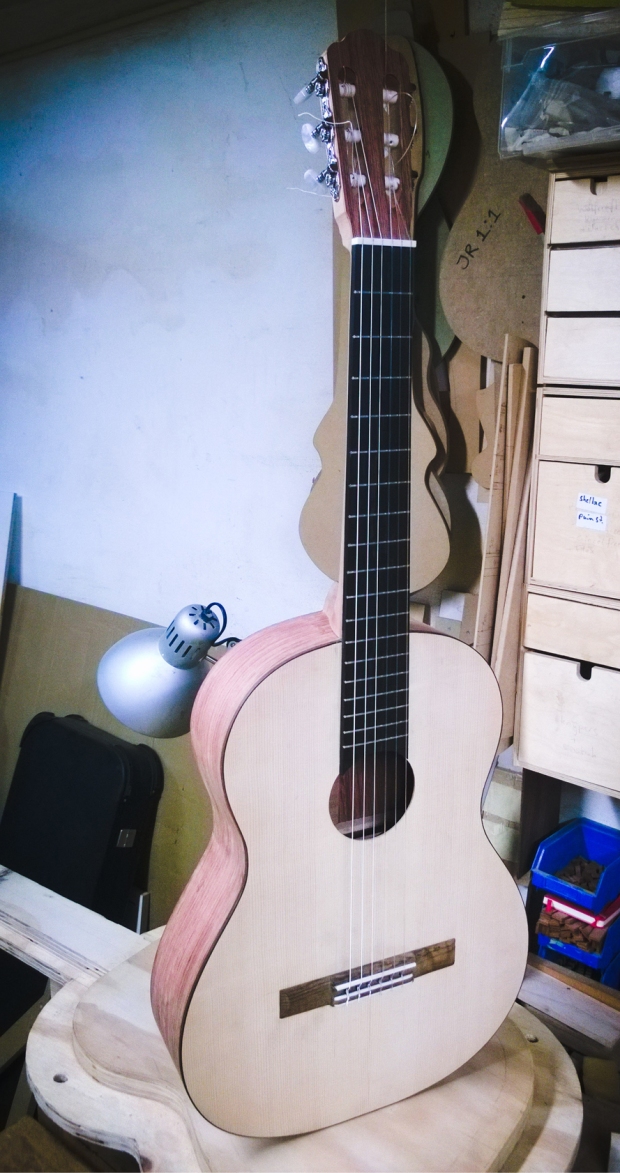The start is always difficult.
A very long time I wanted to start making classical guitars, but never I had the time or energy to start. Running a workshop alone, mixing repair work with new build guitars and making allready a lot of different type of guitars kept me from starting.
I realised I had at least four sets of wood for making a nylon string guitar so I better started or never start at all. I choose a building style, made templates and decided to keep things very simple. Remebering my first steelstring I build 17 years ago was a complete disaster, I started thinning the wood.

This guitar is the first result. I call this #1 “The Wolf”, because it is full of it. And it was hard to catch.
A first guitar hardly ever becomes perfect, and my feeling on taming a nylong string guitar top is around zero.
So what is the result? The instrument is playable, action and neck angle are correct, bridge saddle height is within limits and the instrument is not to heavy. The tone and volume are a bit hidden inside the guitar, and the instrument sounds too warm and lacks brightness. The three treble strings are coming out too soft, although the G string is kind of on level with the B and E string. And wolf tones, a lot. Striking the b string almost gives you two notes.
The top lacks a good dome – somehow the dome I shaped in the working board did not hold in the top, so that will be a major attention for the next instrument.
I decided to not apply a finish on the guitar yet – maybe later, or never. The guitar has no decoration, the binding around the top is to strengthen the side-top joint in my choosen construction technique.

No roset inlay – at least on the outside. The spruce top was laying around in the workshop for a while and I once started an inlay. I was not happy with the result and put it back on the shelf. Now I decided to use it for this guitar, just flip it over and continue. The bracing style is Romanillos – maybe I should do a Torres instead. This is very light.
I however did enjoy the Romanillos side-neck joint, and will keep that in the construction of the next one. It makes it more relaxed to join the sides on the top. The sides are glued in the neck and set with two wooden tapered wigs.

Most important question: was it fun to do? Well you see, I can’t wait for the next one….